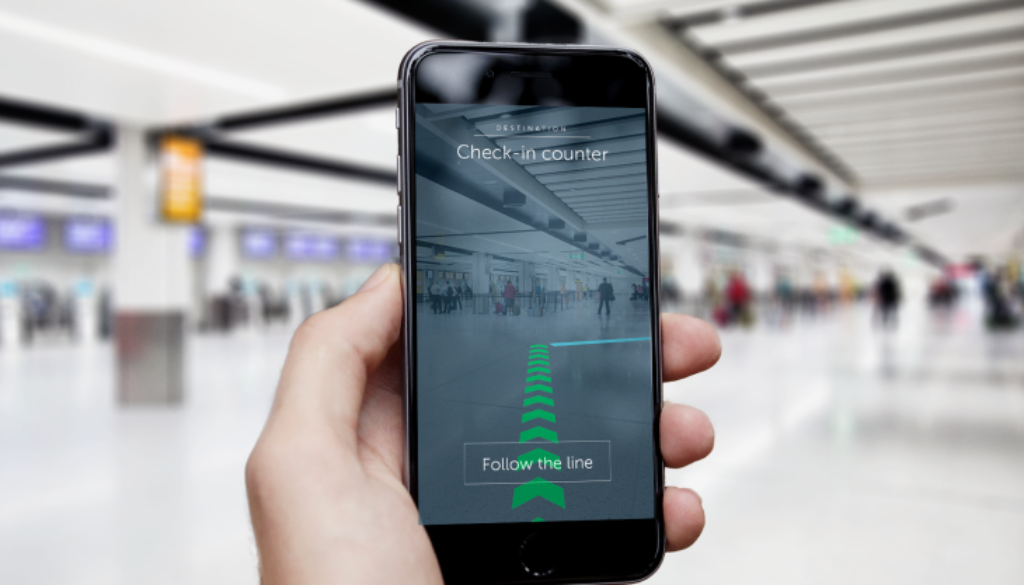Guide to VR/AR Uses in Airport Operations Around the World
Airports have always been on the cutting-edge when it comes to embracing new technologies to improve their operations and the passenger experience. When the social media and mobile app wave came along, global airports were at the vanguard of innovation, pioneering innovations and applications of these technologies to simplify the travel experience for millions of passengers. Airports are constantly developing and nurturing new technologies such as big data, biometrics, artificial intelligence, risk-based screening and Augmented Reality to ease travel and improve passenger processing times.

The use of augmented reality in travel operations is one that elicits some curiosity. The AR tech ecosystem is still a nascent one and even the more agile and customer-service-focused businesses such as online retailers have difficulty in smoothly integrating augmented reality into their business processes.
In global airports across the world, augmented reality is already being put into multiple uses including training, optimizing operations, improving passenger experience and passenger processing times among others.
Here is a look at some of the ways in which airports are using augmented reality in their operations:
Augmented Reality Wayfinding in Busy Airports
London’s Gatwick Airport was one of the first to integrate augmented reality into the passenger experience. According to Business Traveller, the busy airport installed some 2,000 indoor navigation beacons on its premises to enable augmented reality wayfinding in the airport.
These beacons will enable a reliable indoor navigation system for third parties such as airlines, developers and even the airport itself to build augmented reality wayfinding tools that passengers can use within their smartphone apps. The augmented reality wayfinding has already been integrated into some of the Gatwick Airport’s apps.
It is not just at Gatwick Airport where augmented reality is enhancing indoor wayfinding. Shenzhen International Airport in China has last monthly partnered with DiDi to introduce augmented reality wayfinding at the airport using DiDi’s mobile app.
San Jose Airport in California also partnered with Google to test a new ‘Tango’ technology platform at its terminals. The platform relies on computer vision to enable devices to perceive their position relative to their surroundings without relying on external signals or GPS. The platform could make it possible to create location-based augmented reality apps that will be highly precise for their environments.
The San Jose Airport and Google partnership has already seen both parties co-create a custom SJC AR app which has been developed by Aisle411. The app has already been tested by Google employees, the Project Tango Team as well as the app developer in the secure parts of the San Jose International Airport’s Terminal B under the supervision of the airport’s employees.
Augmented Reality in Airport Training
The use of augmented reality and virtual reality in training is one of its more obvious and sustainable uses. Airports and airlines are already using AR in various training applications. Singapore’s Changi Airport is using AR to train staff in ground and ramp handling operations.
The use of the AR Assist at the airport will rely on “smart” glasses with a camera that will project instructions as well as information on what the user is seeing, allowing for a seamlessly and visually rich-training experience without impeding the actual view of the surroundings in an otherwise busy setting.
As the ecosystem expands, we are going to see even more innovative augmented reality solutions for airports. The Gatwick model provides an “open-source” system that developers, airlines and other service providers can tap into to create augmented reality experiences for the millions of passengers passing through the airport. This is a particularly innovative and forward-looking approach.
https://virtualrealitytimes.com/2019/10/17/guide-to-vr-ar-uses-in-airport-operations-around-the-world/https://virtualrealitytimes.com/wp-content/uploads/2019/10/Augmented-Reality-Wayfinding-in-Airports-600x343.pnghttps://virtualrealitytimes.com/wp-content/uploads/2019/10/Augmented-Reality-Wayfinding-in-Airports-150x90.pngAugmented RealityTechnologyAirports have always been on the cutting-edge when it comes to embracing new technologies to improve their operations and the passenger experience. When the social media and mobile app wave came along, global airports were at the vanguard of innovation, pioneering innovations and applications of these technologies to simplify...Sam OchanjiSam Ochanji[email protected]EditorVirtual Reality Times - Metaverse & VR
